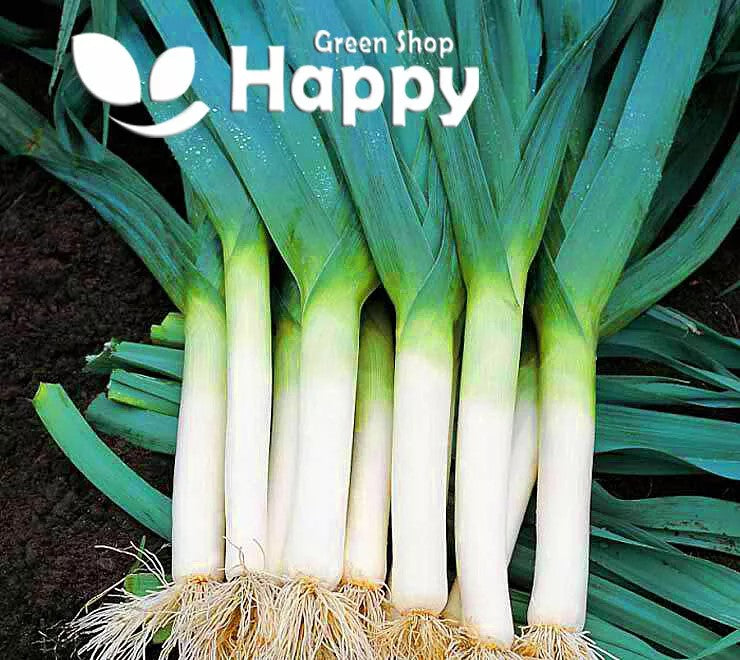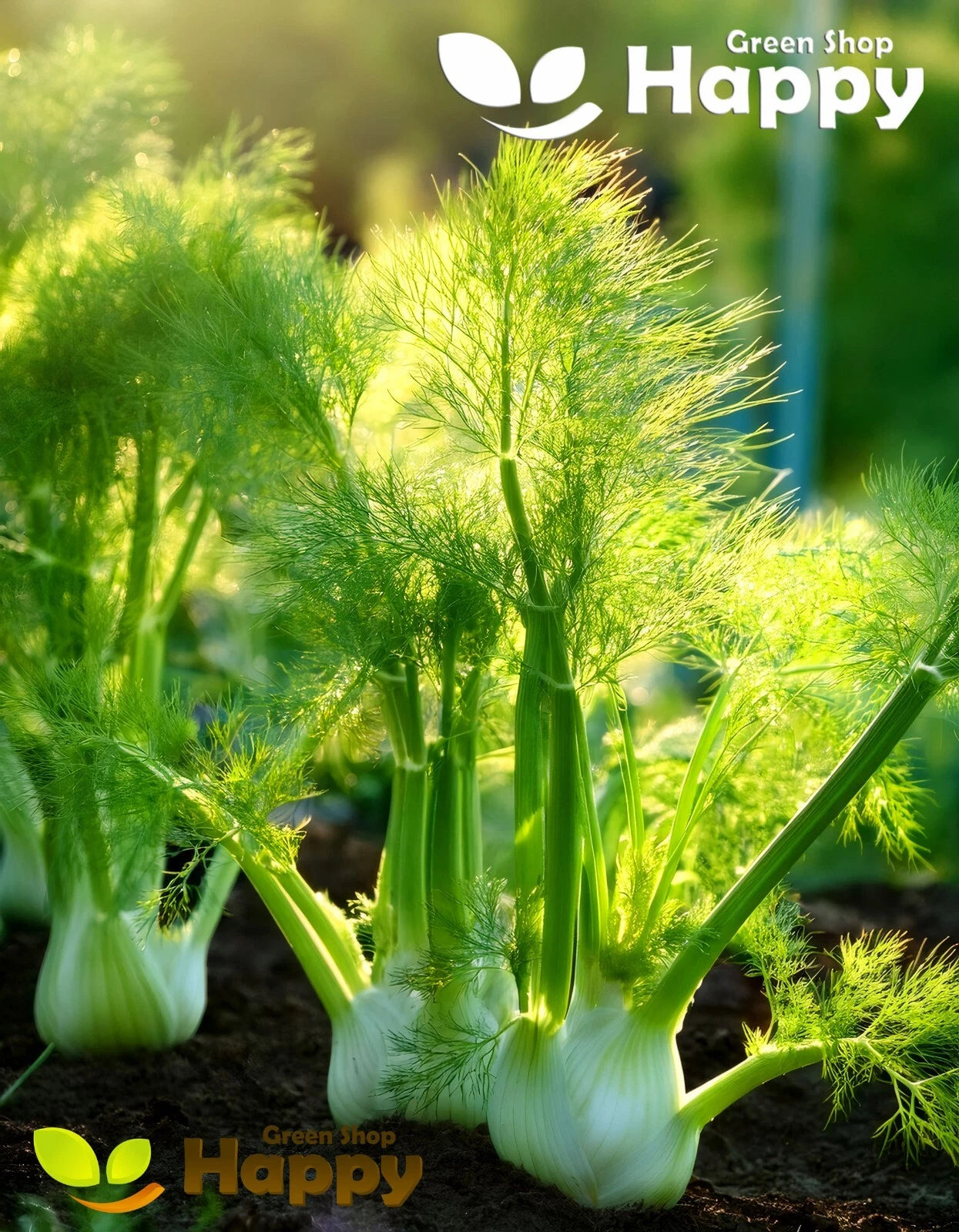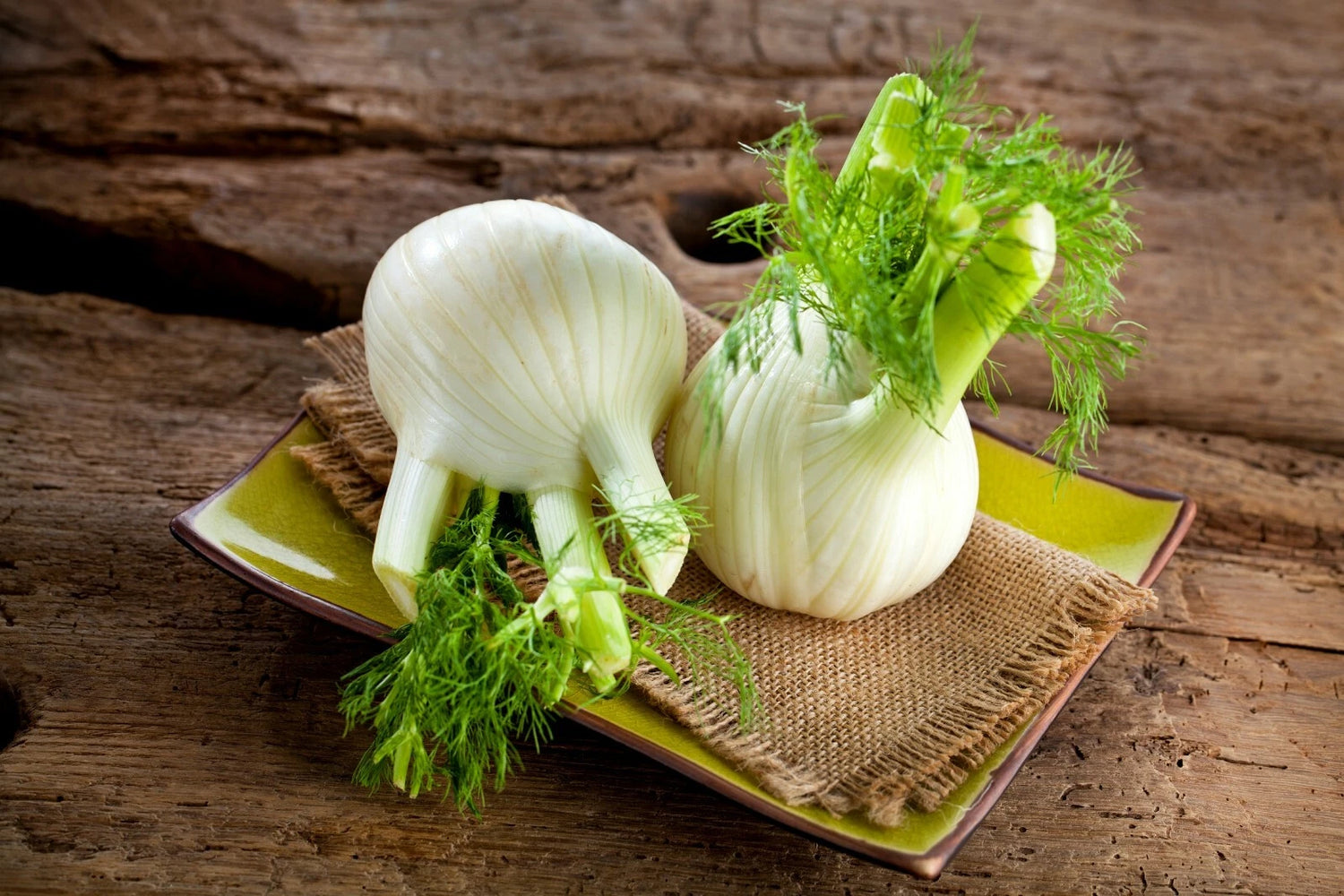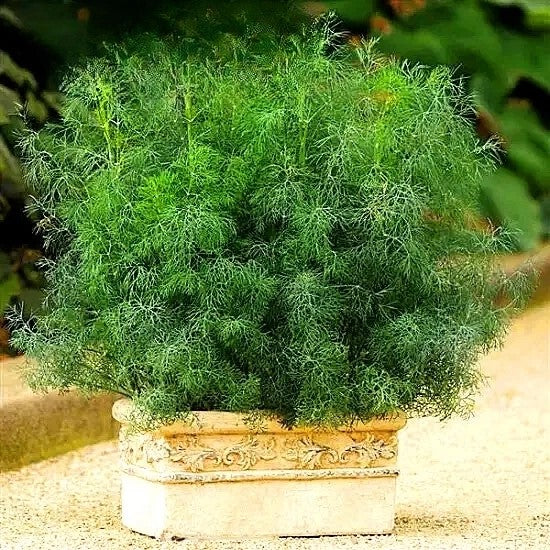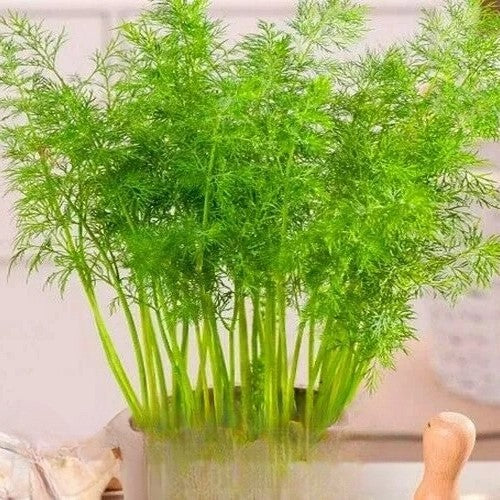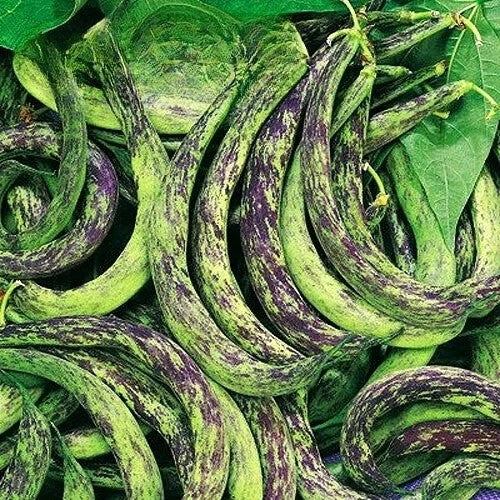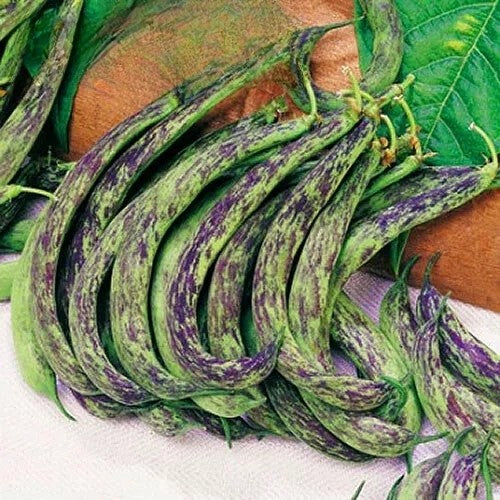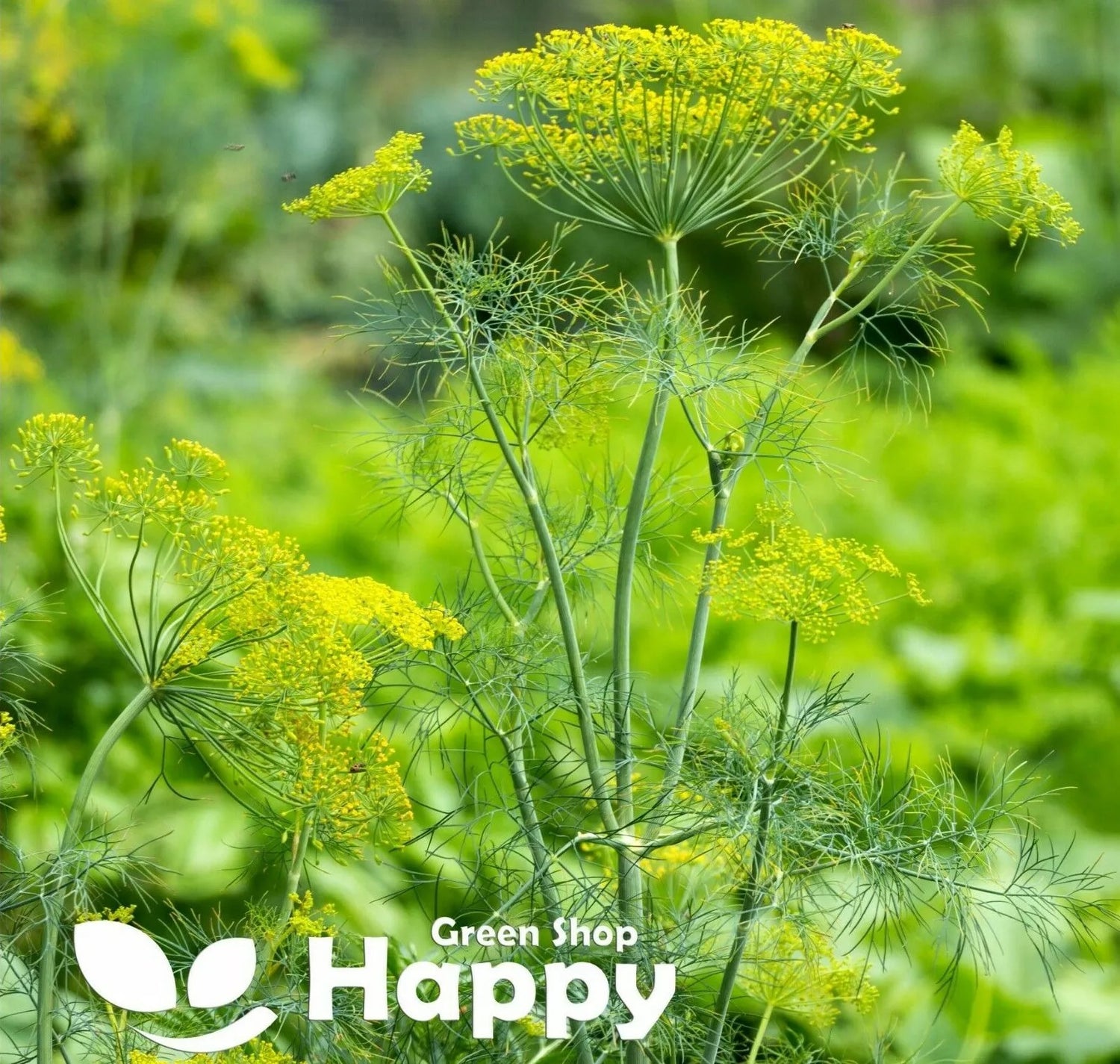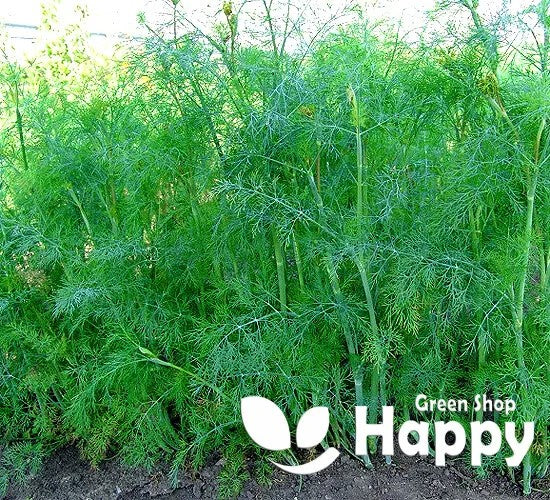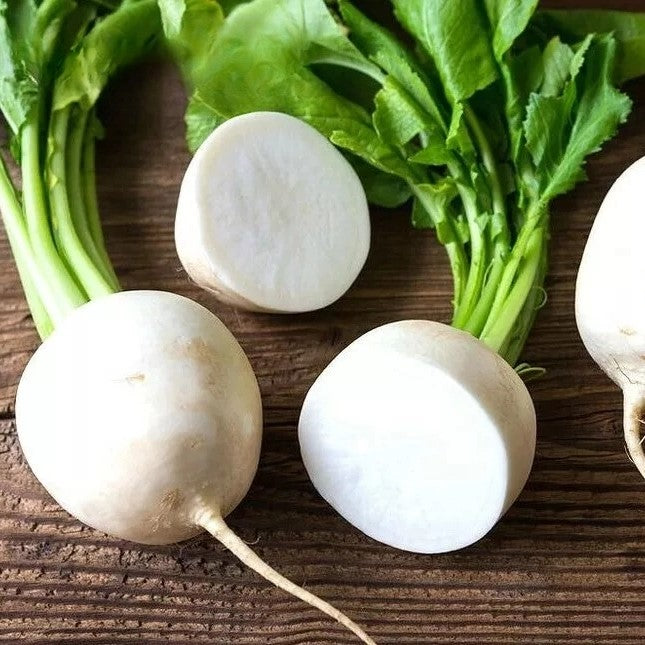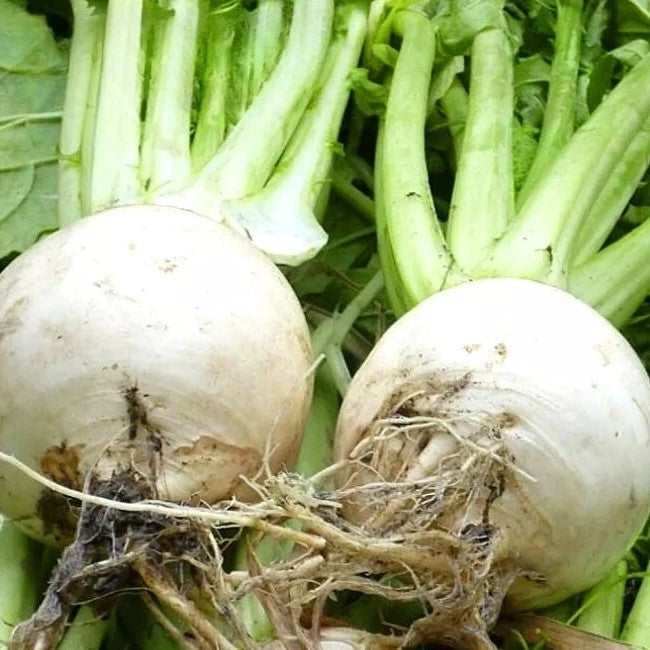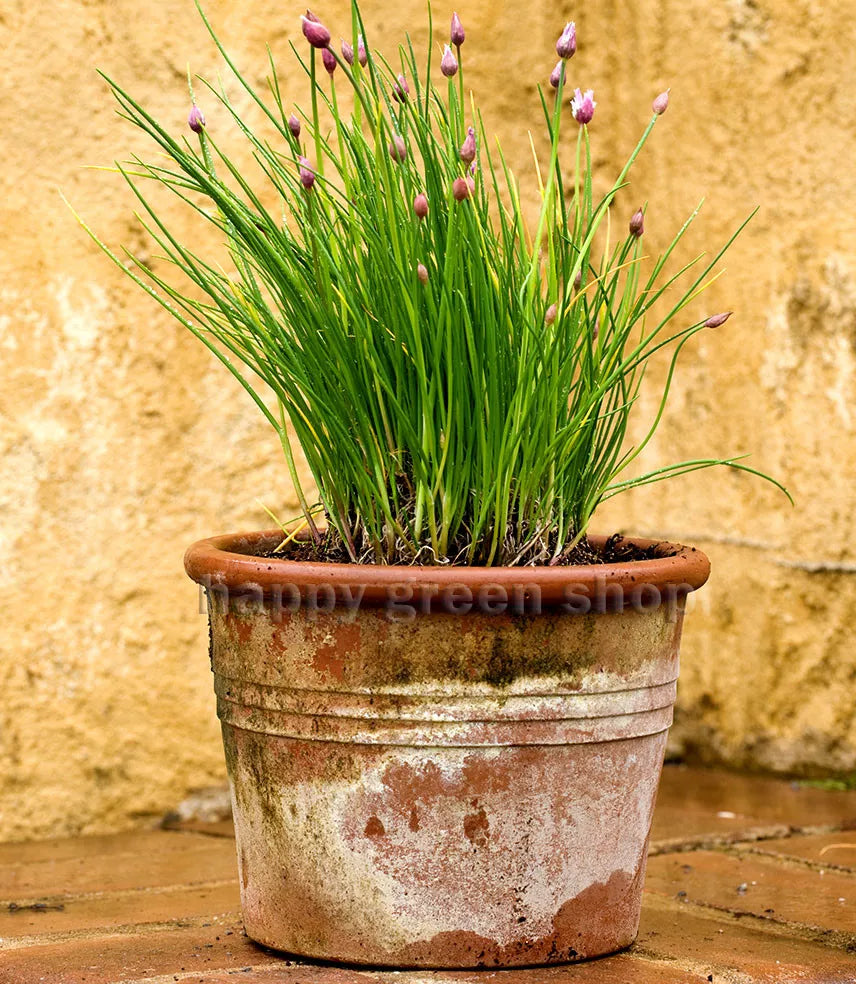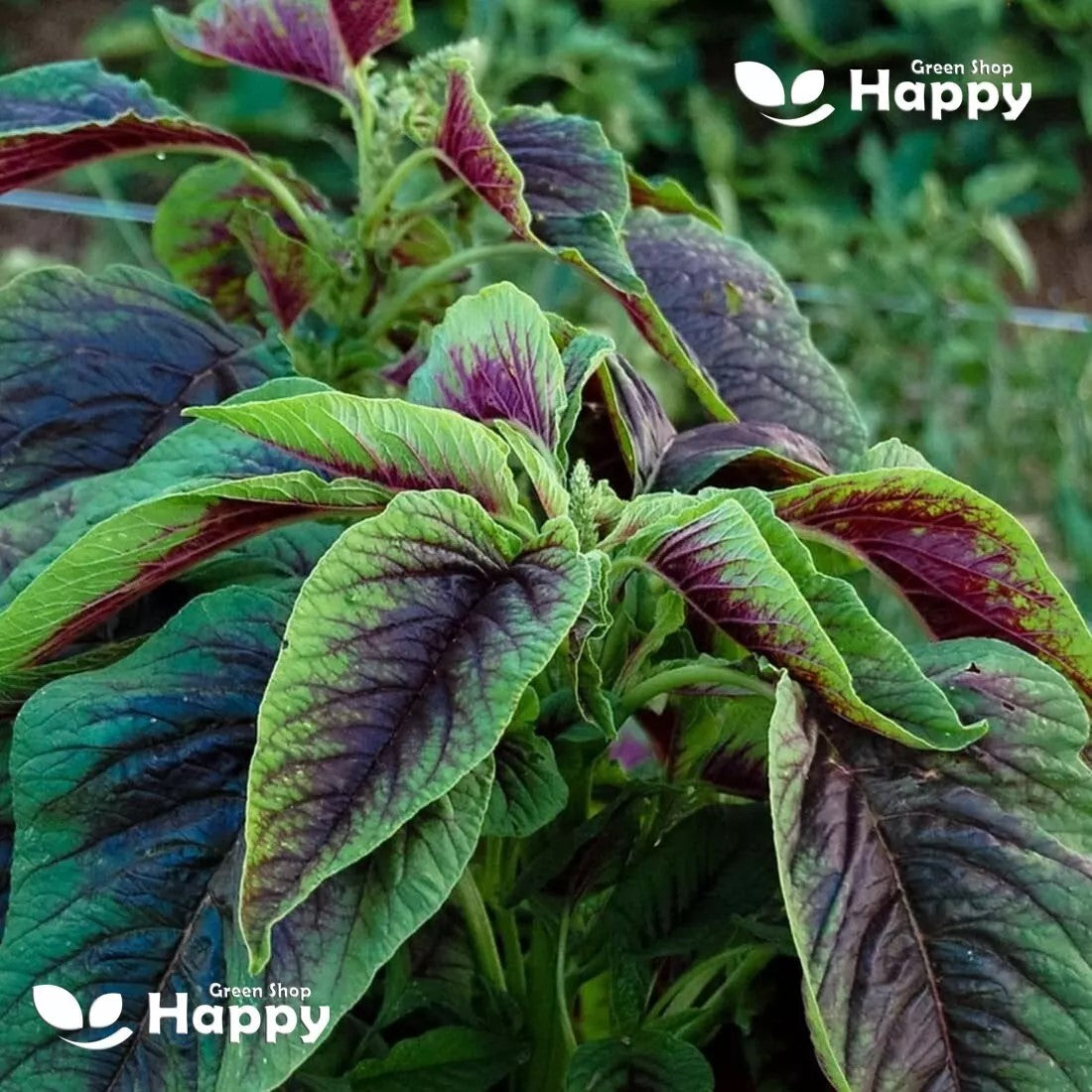Sort by:
97 products
97 products
Fennel Bulb 'Florence' – Seeds (Foeniculum vulgare)
Fennel Bulb 'Florence' is a versatile and flavorful vegetable producing crisp, swollen white bulbs with tender, aromatic fronds. Known for its sweet, anise-like flavor, it’s perfect for roasting, grilling, salads, and soups. Easy to grow, this variety thrives in sunny, well-drained gardens and makes a striking addition to both kitchen and ornamental beds.
How to Grow
-
Sow seeds indoors from February to April or directly outdoors from March to June.
-
Plant 0.5–1 cm deep in fertile, well-drained soil.
-
Thin seedlings to 30–40 cm apart to allow bulb development.
-
Prefers full sun and consistent moisture.
-
Harvest bulbs when swollen and firm, before they become woody.
Key Features
-
Produces crisp, swollen white bulbs with aromatic fronds
-
Sweet, anise-like flavor ideal for cooking
-
Thrives in sunny, well-drained soil
-
Suitable for salads, roasting, grilling, and soups
-
Attractive addition to vegetable and kitchen gardens
Ideal For
-
Culinary use in fresh salads, soups, and roasting
-
Home gardens and raised beds
-
Gardeners seeking versatile, flavorful vegetables
Sowing & Harvest
-
Sow: February to June
-
Depth: 0.5–1 cm
-
Spacing: 30–40 cm
-
Harvest: June to September
Quick Tip
-
For best flavor, harvest bulbs before they get too large and the texture becomes tough.
Dwarf Dill 'Forrest' – Seeds
(Anethum graveolens) – Compact, Aromatic Herb
Dwarf Dill 'Forrest' is a compact, slow-bolting variety ideal for small gardens, pots, and window boxes. Its fragrant, feathery leaves are perfect for seasoning salads, soups, pickles, and fish dishes. This variety produces consistent, tender foliage and is easy to grow even in limited space.
Key Features
-
Type: Annual herb
-
Height: Dwarf, 25–35 cm
-
Flavor: Classic aromatic dill, mild and fresh
-
Harvest: Leaf harvest from 40–50 days after sowing
-
Use: Culinary seasoning, pickling, fresh salads
Ideal For
-
Small gardens, balconies, and containers
-
Culinary use in salads, soups, and sauces
-
Companion planting in vegetable beds
-
Homegrown, fresh herb supply
Sowing & Growing
-
Sow outdoors: March–June, thin seedlings to 10–15 cm apart.
-
Sow indoors: February–April, transplant seedlings carefully.
-
Soil: Light, well-drained, moderately fertile.
-
Sunlight: Full sun preferred.
-
Harvest: Cut leaves as needed; avoid cutting entire plants for continuous growth.
Care Tips
-
Keep soil evenly moist for tender leaves.
-
Regular harvesting encourages bushier growth.
-
Protect young plants from strong wind or heavy rain.
Dwarf Dill ‘Compatto’ – 1000 Seeds (Anethum graveolens)
Description:
Enhance your kitchen garden with Dwarf Dill ‘Compatto’ (Anethum graveolens), a compact, bushy herb perfect for small spaces. Producing feathery green foliage with a strong, aromatic flavor, it’s ideal for seasoning soups, salads, pickles, and fish dishes. This easy-to-grow, fast-maturing variety is suitable for containers, borders, and herb gardens, attracting beneficial insects while providing fresh, flavorful leaves throughout the growing season.
Key Features
-
Compact, bushy growth habit ideal for small gardens
-
Aromatic feathery foliage for culinary use
-
Fast-growing and easy to cultivate
-
Attracts beneficial insects
-
Suitable for containers and herb beds
Ideal For
-
Kitchen and container gardens
-
Herb borders and mixed plantings
-
Culinary use: salads, soups, pickles, and fish
-
Pollinator-friendly herb gardens
Sowing & Growing
-
Sow Indoors: February–April
-
Sow Outdoors: March–May
-
Germination: 7–14 days at 15–20°C
-
Height: 25–30 cm
-
Spacing: 20–25 cm apart
-
Light: Full sun
-
Soil: Well-drained, fertile
Care Tips
-
Water moderately and keep soil evenly moist
-
Harvest leaves regularly to encourage bushy growth
-
Mulch lightly to retain moisture
-
Can self-seed for future crops
Dwarf Bean 'Anellino Di Trento' – Seeds
(Phaseolus vulgaris) – Traditional Italian Variety
The 'Anellino Di Trento' dwarf bean is an Italian heirloom variety cherished for its curved, stringless pods with a tender texture and rich, nutty flavor. Compact and high-yielding, this bush bean is perfect for smaller gardens and does not require staking. Excellent both as a fresh green bean or as a dried bean for soups and stews.
Key Features
-
Type: Dwarf bush bean (annual legume)
-
Height: 40–50 cm
-
Pods: Curved, green, stringless, 12–14 cm long
-
Harvest: 60–70 days from sowing
-
Special: Dual-purpose – eat fresh or dried
Ideal For
-
Fresh picking for cooking or steaming
-
Drying for winter storage
-
Containers, small gardens, or allotments
-
Traditional Italian cuisine
Sowing & Growing
-
Sow outdoors: Late May–July, once soil is warm
-
Spacing: 40 cm between rows, 5–7 cm between seeds
-
Soil: Well-drained, fertile, moderately moist soil
-
Sunlight: Full sun
-
Watering: Regular, especially during flowering and pod set
Care Tips
-
Do not sow in cold, wet soil – beans need warmth.
-
Successive sowings extend the harvest season.
-
No staking required, but mulch helps conserve moisture.
Dill Seeds (Anethum graveolens)
Bring fresh flavor and fragrance to your garden with Dill, a versatile culinary and medicinal herb. Known for its delicate feathery foliage and aromatic seeds, dill is a must-have for seasoning fish, soups, pickles, and salads. Easy to grow and quick to mature, it also attracts beneficial pollinators, making it a perfect addition to herb beds and kitchen gardens.
How to Grow
-
Sow directly outdoors from spring to early summer.
-
Prefers light, well-drained soil in full sun.
-
Sow thinly, 0.5–1 cm deep in rows 30 cm apart.
-
Thin seedlings to 15 cm spacing.
-
Avoid transplanting as dill dislikes root disturbance.
Key Features
-
Aromatic herb with feathery foliage and seeds
-
Delicious for seasoning fish, soups, salads, and pickles
-
Quick-growing and easy for beginners
-
Attracts bees and beneficial insects
-
Dual use: fresh leaves and dried seeds
Ideal For
-
Home cooking and herbal tea
-
Pickling and preserving vegetables
-
Companion planting in the garden
-
Attracting pollinators and beneficial insects
Sowing
-
Best time: March to June
-
Depth: 0.5–1 cm
-
Row spacing: 30 cm
-
Plant spacing: 15 cm after thinning
-
Harvest: Leaves in 6–8 weeks, seeds later in the season
Quick Tip
-
For a continuous supply, sow dill little and often every 2–3 weeks through the summer.
Dill 'Bouquet' – Seeds (Anethum graveolens)
Dill 'Bouquet' is a fast-growing herb prized for its aromatic leaves, seeds, and delicate yellow flower heads. This popular variety is widely used in the kitchen – perfect for seasoning fish, pickles, sauces, salads, and soups. Its feathery foliage is also highly decorative, making it a dual-purpose plant for culinary and ornamental use.
How to Grow
-
Sow outdoors: April – July directly where plants are to grow.
-
Soil: Well-drained, fertile soil in full sun.
-
Spacing: Thin seedlings to 20–30 cm apart.
-
Water regularly to keep soil moist but not waterlogged.
Key Features
-
Popular dill variety with strong flavor
-
Aromatic leaves, seeds, and flower heads
-
Fast-growing and easy to cultivate
-
Great for fresh use or drying
-
Decorative feathery foliage
Ideal For
-
Herb gardens and borders
-
Culinary use in pickling, sauces, and fish dishes
-
Companion planting with cucumbers and cabbages
Sowing & Harvest
-
Sow: April – July
-
Harvest: Leaves from May onwards, seeds in late summer
Quick Tip
Harvest leaves early in the morning for maximum flavor. Sow little and often for a continuous supply throughout the season.
Daikon Radish 'Accord' – Seeds (Raphanus raphanistrum)
The Daikon Radish 'Accord' is a high-quality Japanese variety producing long, smooth, white roots with a crisp, juicy texture and mild, sweet flavor. This daikon is perfect for stir-fries, soups, pickling, or enjoying raw in salads. Its reliable growth and uniform shape make it an excellent choice for home gardeners and market growers alike.
'Accord' is known for its vigorous growth and resistance to bolting, giving consistently high yields. It thrives best in cooler conditions and is ideal for late summer to autumn sowing for harvests well into winter.
How to Grow
-
Sow outdoors: July – September for autumn and winter use
-
Sowing depth: 1–1.5 cm deep in rows 30–40 cm apart
-
Thin seedlings: 15–20 cm apart
-
Position: Sunny, open site
-
Soil: Deep, loose, fertile soil with consistent moisture
Key Features
-
Produces long, uniform white roots
-
Mild, sweet, and crisp flavor
-
Excellent for stir-fries, soups, and pickling
-
Vigorous, reliable, and slow to bolt
-
Ideal for autumn and winter harvests
Harvest
-
Harvesting period: October – December
-
Lift when roots reach 25–35 cm long for best flavor and texture.
Short Tip
Sow in late summer for crisp, sweet roots that store well into the colder months.
Chives 'Bohemia' - 1000 seeds (Allium schoenoprasum) - Hardy Perennial - Overwintering
£1.15
Unit price perChives 'Bohemia' - 1000 seeds (Allium schoenoprasum) - Hardy Perennial - Overwintering
£1.15
Unit price perChives ‘Bohemia’ – Seeds (Allium schoenoprasum) – Hardy Perennial
Chives ‘Bohemia’ is a hardy perennial herb, perfect for overwintering and providing fresh growth year after year. Known for its fine, hollow green leaves and mild onion flavor, it’s a versatile kitchen herb ideal for salads, soups, sauces, and garnishes. In summer, attractive purple-pink flowers appear, loved by bees and pollinators, making this a decorative as well as useful garden plant.
How to Grow
-
Sow indoors: February – April in pots or trays at 15–20°C.
-
Sow outdoors: April – July in finely prepared soil.
-
Thin or transplant seedlings to 20 cm apart.
-
Prefers full sun or partial shade and well-drained soil.
-
Cut regularly to encourage fresh growth.
Key Features
-
Hardy perennial herb with overwintering growth
-
Fine, mild onion-flavored leaves
-
Decorative purple flowers attract pollinators
-
Easy to grow in pots, borders, or herb gardens
-
Reliable year-round harvests
Ideal For
-
Fresh salads, soups, sauces, and garnishes
-
Herb gardens, borders, and containers
-
Attracting bees and pollinators
Sowing & Harvest
-
Sow: February – July
-
Harvest: May – October, with regrowth in spring
Quick Tip
Divide clumps every few years to maintain healthy growth and extend the lifespan of your chive plants.
CHINESE SPINACH ‘RED CALLALOO’ SEEDS (Amaranthus tricolor)
Chinese Spinach ‘Red Callaloo’ is a fast-growing, heat-tolerant leafy green prized for its tender, nutritious leaves. With striking red and green foliage, it is both ornamental and edible, adding color to your garden and flavor to your kitchen. A staple in Asian and Caribbean cuisine, it thrives through summer and can be harvested young for salads or mature for cooking.
Why Grow "Red Callaloo"
-
Nutritious, tender leaves with a mild spinach-like flavor
-
Heat-loving, fast-growing summer green
-
Vibrant red and green foliage adds ornamental value
-
A staple in Asian and Caribbean dishes
Key Features
-
Type: Annual (Amaranthus tricolor)
-
Height: 60–90 cm
-
Harvest: 30–60 days from sowing
-
Position: Full sun
-
Uses: Salads, stir-fries, soups, stews, ornamental beds
Ideal For
-
Growing nutritious, heat-tolerant summer greens
-
Adding vibrant color to vegetable and ornamental gardens
-
Harvesting as baby leaves or mature greens
-
Home cooks and gardeners looking for dual-purpose crops
Sowing & Growing
-
Sow outdoors: After last frost when soil is warm
-
Germination: 7–14 days
-
Thin seedlings: 20–30 cm apart
-
Harvest young leaves for salads or mature for cooking
-
Prefers full sun and well-drained soil
Showing 81/97

